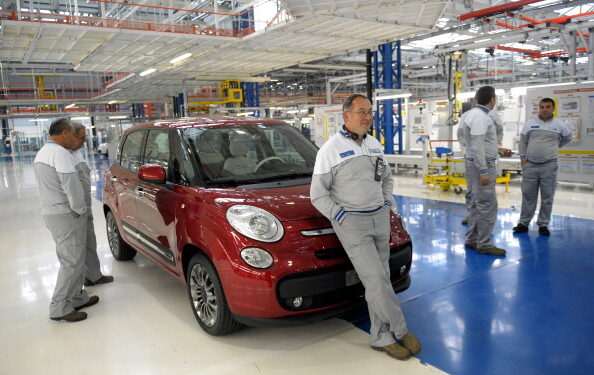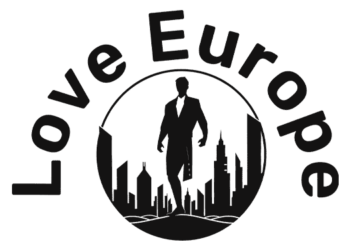To protect the European automotive industry and 14 million jobs, the European Commission (EC) last week raised the existing 10% tariff on imports of electric vehicles from China by an additional 35%. This move was justified by Brussels as an effort to restore “fair competition conditions,” arguing that large state subsidies for Chinese manufacturers allow them to sell vehicles on the European market at much lower prices than Volkswagen, Stellantis, and other European giants.
In response, Beijing condemned the “unfair and unreasonable protectionist measures” and launched an anti-dumping investigation into the import of pork, dairy products, and wine-based alcoholic beverages from the EU.
The EC increased tariffs on Chinese electric vehicles despite opposition from Germany, whose companies operate manufacturing facilities in China and are therefore more concerned than others about the potential consequences of a trade war with the country. According to the EC’s decision, manufacturers cooperating in the EU investigation into the scale of Chinese state subsidies will face an additional 20.7% tariff, while others will be subject to a 35.5% tariff. Tesla vehicles from its Shanghai factory will be subject to a 7.8% tariff, BYD vehicles to 17%, Geely vehicles to 18.8%, and those from SAIC to 35.3%.
A wave of job insecurity across European factories
Faced with an increasing influx of Chinese manufacturers, high prices for their own electric vehicles, the elimination or reduction of subsidies for EV purchases, and weak demand, European companies are in a precarious situation. Volkswagen has announced the closure of its Dresden factory, and trade unions claim that management is planning to shut down as many as three out of ten factories in Germany, potentially laying off tens of thousands of workers. Both the unions and the government of Chancellor Olaf Scholz are urging the company’s management to propose alternative solutions for sustainable development and to safeguard thousands of jobs, rather than implementing drastic cuts. However, the management argues that closing some facilities, laying off a large number of employees, and reducing salaries by 10%—with a two-year freeze on further wage increases—are necessary steps for Volkswagen to remain competitive in the foreseeable future.
As part of this plan, it has already been officially announced that Audi, a subsidiary of the Volkswagen Group, will close its Brussels plant on 28 February 2025 due to poor sales of electric and luxury SUV models, leaving 3,000 workers unemployed.
Challenges across other major European manufacturers
Other large European manufacturers are not faring much better. In the third quarter of this year, Stellantis—home to 14 brands, including Peugeot, Fiat, Opel, Citroën, Chrysler, Alfa Romeo, and Maserati—reported a 27% revenue decline compared to the same period in 2023. Shares of the company, which includes the Kragujevac-based Fiat Chrysler Automobiles Serbia (FCA), have fallen by over 42% on the Milan stock exchange since the start of the year. Unlike many European companies that are re-evaluating their electric vehicle production plans or lobbying the EC to allow the sale of internal combustion engine vehicles beyond 2035, Stellantis CEO Carlos Tavares remains committed to a future in electric and hybrid vehicles.
This determination persists despite mounting challenges and growing worker dissatisfaction globally. In Serbia, FCA employees are grumbling over low wages; in the United States, plans to build a new facility in Michigan have been shelved; and in Italy, 20,000 workers protested on the streets of Rome on 18 October against proposed temporary layoffs and production halts at Fiat plants in four cities. According to unions, Fiat’s factories in Italy saw a 31.7% drop in production during the first nine months of this year, producing just 387,000 vehicles—the lowest nine-month production since 1956. These factories, however, have the capacity to produce up to 1.5 million vehicles annually.
Adding to the challenges, the Italian government has decided to cut support for its domestic automotive industry by €4.6 billion by 2030. This is despite Carlos Tavares warning the Italian parliament that the country already spends significantly less on automotive support than other major EU nations.
Weak Demand and Software Glitches Delay Production
In such challenging circumstances, it comes as no surprise that serial production of the Fiat Grande Panda at Stellantis’ Serbian subsidiary, FCA Kragujevac, will not begin by the end of this year—and it is still unclear when it will commence. As previously reported by Radar, only a few dozen vehicles are being produced daily at the factory, which is far from full-scale production, typically requiring at least several hundred vehicles to roll off the assembly lines each day.
In addition to weak demand, Radar has learned that serial production of the Grande Panda is also being delayed by a software glitch, which similarly postponed the start of electric eC3 production at Stellantis’ factory in Trnava, Slovakia. On a slightly brighter note, the eC3 is now being manufactured in small series in Kragujevac, and test assembly of a hybrid version of the Grande Panda has recently begun, much earlier than expected. It is speculated that Stellantis is accelerating hybrid production to mitigate the damage caused by delays in the electric version’s rollout, which the company has already advertised in France and the Netherlands. Consequently, it is believed that vehicles currently produced are being shipped to dealerships in these countries.
This provides reason to believe that Stellantis will not abandon serial production in Kragujevac. Insiders anticipate that serious production of the Grande Panda, one of Fiat’s key models for the global market, will begin in early 2025, or by the end of the first quarter at the latest. The future of Fiat, and possibly its survival, heavily depends on the production and sales of the Grande Panda.
Meanwhile, workers at FCA Serbia are increasingly vocal about their dissatisfaction with wages and working conditions, while concerns about the company’s future are growing. Radar reports that employees plan to meet soon with Kragujevac city officials and representatives of the Serbian government, which holds a one-third stake in FCA, to discuss the current situation and guarantees for the factory’s future.
The Rise and Fall of Serbia’s Automotive Industry
By coincidence, Fiat workers took to the streets of Rome in mass protests on October 18—the same date in 1955 when production of the Fiat 600, later branded as the Zastava 750 or the beloved “Fića,” began in Kragujevac’s Crvena Zastava factory under a licensing agreement signed with Fiat a year earlier. From 1955 to November 1985, when the last Fića rolled off the production line, exactly 923,487 units were produced at Zastava.
But the story began even earlier in 1904, when Kragujevac’s Military Technical Institute (VTZ) established a workshop for repairing Benz trucks for the Serbian army. In the 1930s, VTZ set up an auto repair workshop, where between 1939 and 1941, it assembled 320 to 400 Chevrolet trucks for the Yugoslav Royal Army. By April 1941, VTZ employed over 12,000 workers and operated 10,000 machines, producing a range of military equipment from artillery to munitions.
When Germany occupied Yugoslavia in 1941, it attempted to transform VTZ into a major producer of munitions for the Third Reich under the Hermann Göring conglomerate. However, worker sabotage and guerrilla resistance foiled these plans, and the facility was ultimately plundered. Post-war, much of VTZ’s equipment was found scattered across Germany, Austria, and elsewhere, with some of it even recovered from the Jasenovac concentration camp. By October 1944, when Kragujevac was liberated, VTZ was left with only 82 heavily damaged machines.
Further setbacks followed with the 1948 Informbiro Resolution, which led to fears of Soviet aggression. As a result, all artillery production was relocated from Kragujevac to Bosnia and western Serbia, leaving 5,000 workers unemployed. Seeking new production programs, workers turned to vehicle assembly, organizing a referendum in 1953 in which 94% supported car production. That year, 162 Willys jeeps were assembled, but further production was halted due to disagreements with the parent company.
In 1954, Fiat licensed production rights, and the following year, engineer Prvoslav Raković was appointed director of Crvena Zastava. In 1959, after intense negotiations with Fiat, Raković secured a $30 million loan to build a new factory capable of producing 82,000 vehicles annually—far exceeding the 32,000 initially reported to the military oversight committee. The new plant opened in 1962, with subsequent expansions in the 1970s making it one of Fiat’s most advanced facilities in Europe.
The Glory and Decline of Zastava
Following the iconic Fića, Zastava began producing the 1,300 sedan in the 1960s, Yugoslavia’s first homegrown luxury car. However, Zastava’s true success came on October 15, 1971, with the launch of the Zastava 101, based on Fiat’s 128 model but upgraded with a fifth door, making it the most successful vehicle in Yugoslav automotive history. Over a million units were sold in 38 countries, excluding Australia, by November 2008, when domestic car production ceased in Kragujevac.
Zastava’s rise continued in 1980 with the Yugo, 794,428 of which were produced, including 142,000 exported to the U.S. between 1985 and 1992. Despite its initial success, Zastava began to falter after the breakup of Yugoslavia in 1991. Production plummeted from 96,478 vehicles in 1991 to just 5,553 by 1993.
The Zastava brand officially disappeared with Fiat’s return to Kragujevac in September 2008. Unlike Serbia, countries like the Czech Republic and Romania retained their brands, Škoda and Dacia, which remain respected European automakers. Zastava, however, is no more, its flag first lowered to half-mast, and then completely.
(Radar, 20.11.2024)
This post is also available in: Italiano
Source link : http://www.bing.com/news/apiclick.aspx?ref=FexRss&aid=&tid=673e27a78d1c439ab53cc36f600e7b59&url=https%3A%2F%2Fwww.serbianmonitor.com%2Fen%2Feuropean-auto-industry-in-serious-crisis-workers-at-kragujevac-factory-scared-for-their-jobs%2F&c=1853416397200776645&mkt=de-de
Author :
Publish date : 2024-11-20 09:22:00
Copyright for syndicated content belongs to the linked Source.


